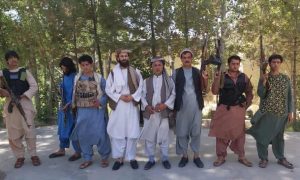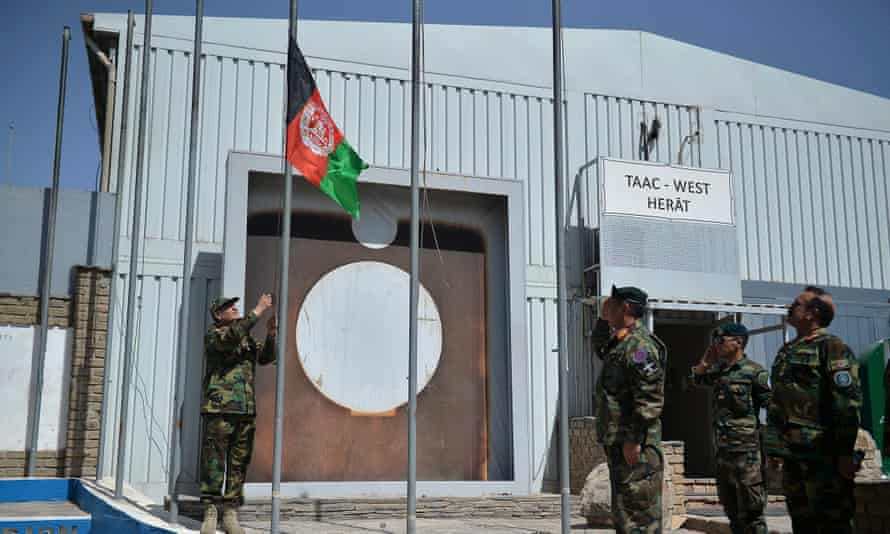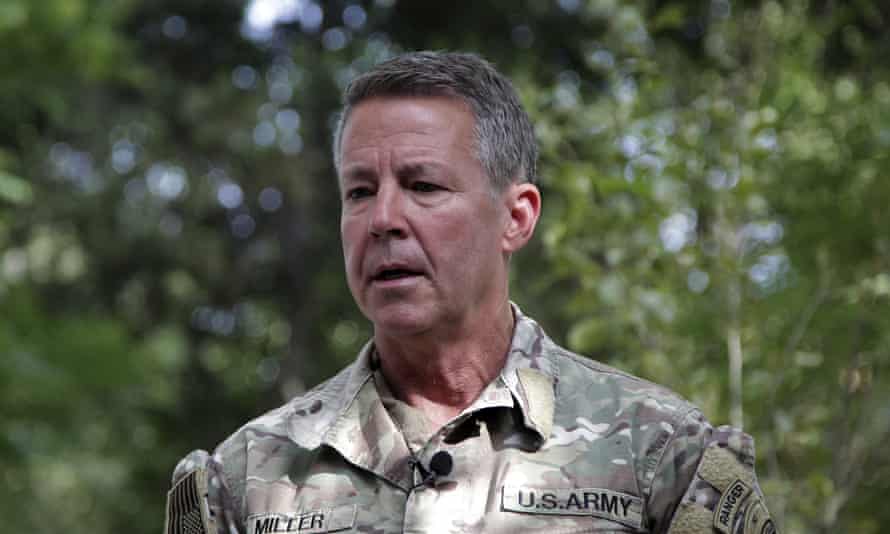“What I don’t want to do is speculate what that [support] looks like in the future,” he said. One of the biggest questions is about air support, which has been vital to staving off major Taliban advances in recent years, particularly on cities such as Kunduz.
Afghanistan runs a small air force, which carries out attack operations and medical evacuations, and supplies remote and besieged outposts. But Afghan pilots and aircraft are badly stretched by the pace of the war, and for maintenance they rely on US contractors, whose future in the country is unclear. There is some support from American bomber planes, and armed drones now fly into Afghan skies from beyond its borders, but they reportedly struggle to coordinate strikes with troops on the ground.
“The Taliban launched the attack at 10pm and we were fighting until 6am. We called our commanders, we called Kabul, we called the Herat governor begging for air support, but no one arrived,” said a commando who was besieged in Obe district before it fell to the Taliban.
“In the morning we called and said we don’t need airstrikes, just pick up the dead and injured, but they never came either,” added the commando, who wished to remain anonymous for fear of repercussions.
And so as officials cast around for ways to protect their population, they are embracing militias, after years of western-backed efforts to disarm the country’s unofficial bands of armed men. After the Guardian’s meeting with Siawshani, he sat down with the district governor and police chief to discuss tactics and support.
In a different Afghanistan, the one the US once dreamed of building, the young men waiting outside for him would have had different futures. Salim Shah graduated from high school last year, and planned to study law at university. Now Jawad has given up his job as a mechanic, he is unsure how he will support his two children.
But collectively they decided that the fight for their country had become critical. Many have already lost brothers, cousins and neighbours to the Taliban. “Our main aim is protecting our family, our relatives and our land,” Jawad said.
While this iteration of the long Afghan civil war will be his first time in a conflict, many of those leading the militias were battle hardened in past cycles of violence. Siawshani first picked up a gun with the Mujahideen in the 1980s to fight the Soviets. Among his key lieutenants is Rahmatullah Afzali, a retired general who spent over three decades in the government army that Siawshani fought.
Afzali raises an eyebrow at their current alliance. “When he was doing jihad, I worked for [the then president] Najibullah. Now the Taliban have brought us together,” he says with a grin. But never has the fight been so critical.
“I have fought all over Afghanistan, I was injured 17 times, and I have never felt under as much pressure as the last four months, since Biden said he was giving Afghanistan to the Taliban.”
Akhtar Mohammad Makoii contributed reporting
 Haji Ghoulam Farouq Siawshani (centre with grey waistcoat and silver turban ), former oil trader turned militia commander, with his men.
Haji Ghoulam Farouq Siawshani (centre with grey waistcoat and silver turban ), former oil trader turned militia commander, with his men. 

